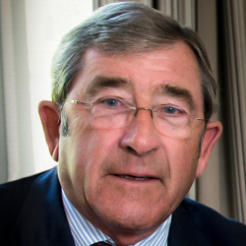Securing transformational gifts from major donors is a main focus for many fundraisers. Would-be philanthropists are out there, but charities need to know where to look and how to approach them, says Hugh Radojev.
According to research by Forbes, there are more billionaires on Earth today than at any other time in history. So, why aren't they giving more? In the US, people like Bill and Melinda Gates, Warren Buffett and Tim Cook have pledged vast sums of their own personal fortunes to charitable causes.
But in the UK, where many of the world’s ‘mega-rich’ choose to live, philanthropy is harder to come by.
Speaking at Fundraising First Thing last week, John Stone [pictured] of the Stone Family Foundation argued that the problem in the UK may well be a cultural one.
The US has a rich history of philanthropy, going back to men such as the Scottish born industrialist Andrew Carnegie. By the time Carnegie died in 1919, he had given more than £400m (over £5bn in today’s money) to various charities. Men such as Carnegie defined philanthropy as we know it today and their legacy continues to live on in America. This level of philanthropic giving hasn't existed in the UK since Victorian times.
Stone said that a lot of wealthy people he knows would like to donate money to charitable causes, but don't know where to start. He told the gathered fundraisers to always be clear and concise when approaching prospective donors about what it is their organisation actually does. Many would-be philanthropists come from business backgrounds, he explained, and would therefore be more likely to become involved with a charity if they understood its aims and real impact.
But getting a major donor interested in an organisation is just the beginning. As Claudia Knights, head of philanthropy at the Prince’s Trust, explained, building a long-term personal relationship with a donor is just as important, if not more so.
Above all else, would-be philanthropists are people and people like to feel valued. Taking the time to build a rapport with major donors and building trust can be the difference between intermittent giving and the fundraising holy grail of transformational gifts.
So, what did we learn? As with so many issues that face the fundraising sector, there are no easy answers to be found. There is no silver bullet. Yet soon after the event, we received feedback from the director of fundraising at a major charity who said that John Stone and Claudia Knights had “inspired” them to change their major donor fundraising strategy.
Maybe it's time to take another look at how your organisation approaches its major donors.
- In the April edition of Fundraising magazine, read more on the big issues around major donor fundraising









